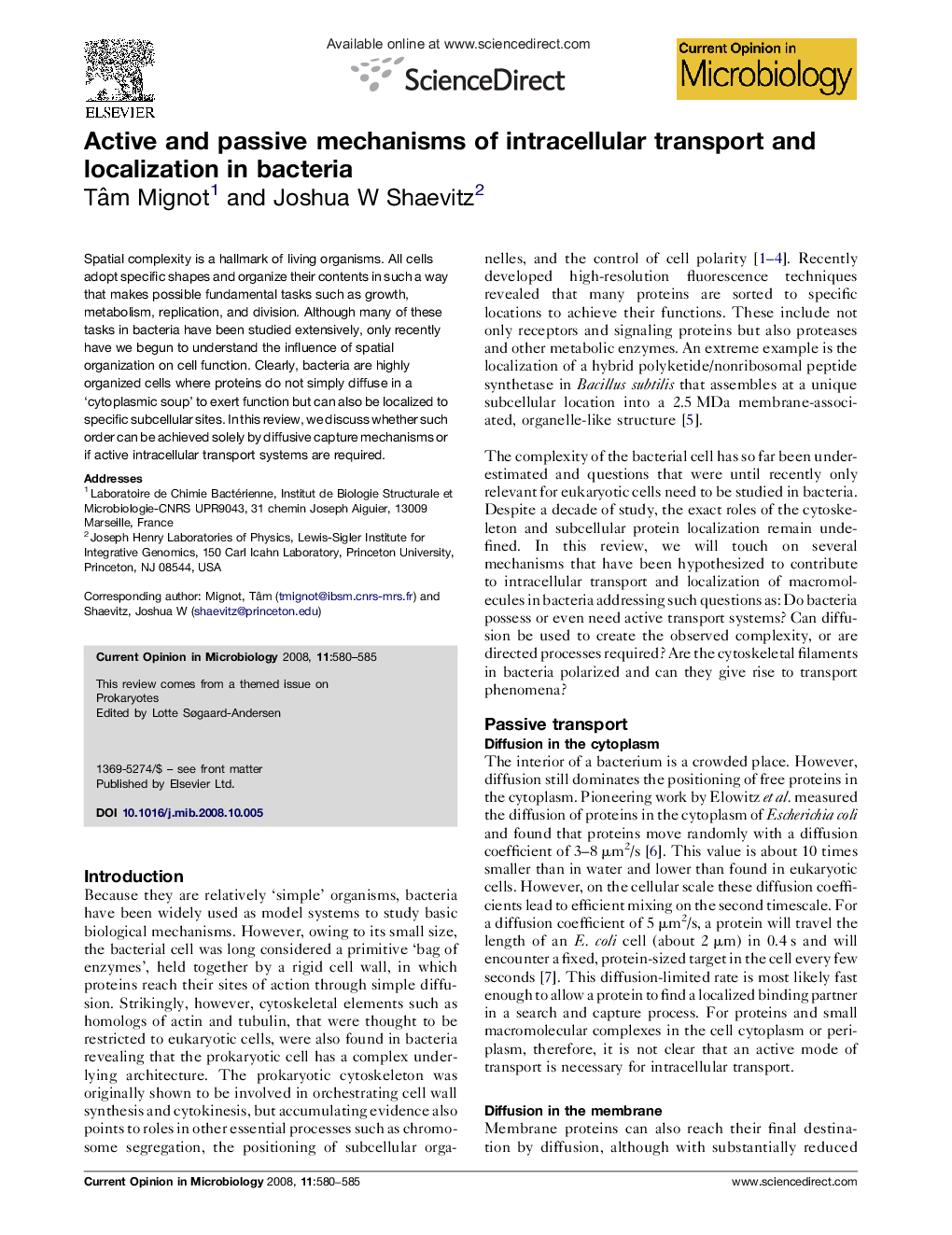| Article ID | Journal | Published Year | Pages | File Type |
|---|---|---|---|---|
| 3399531 | Current Opinion in Microbiology | 2008 | 6 Pages |
Abstract
Spatial complexity is a hallmark of living organisms. All cells adopt specific shapes and organize their contents in such a way that makes possible fundamental tasks such as growth, metabolism, replication, and division. Although many of these tasks in bacteria have been studied extensively, only recently have we begun to understand the influence of spatial organization on cell function. Clearly, bacteria are highly organized cells where proteins do not simply diffuse in a ‘cytoplasmic soup’ to exert function but can also be localized to specific subcellular sites. In this review, we discuss whether such order can be achieved solely by diffusive capture mechanisms or if active intracellular transport systems are required.
Related Topics
Life Sciences
Immunology and Microbiology
Microbiology
Authors
Tâm Mignot, Joshua W Shaevitz,
